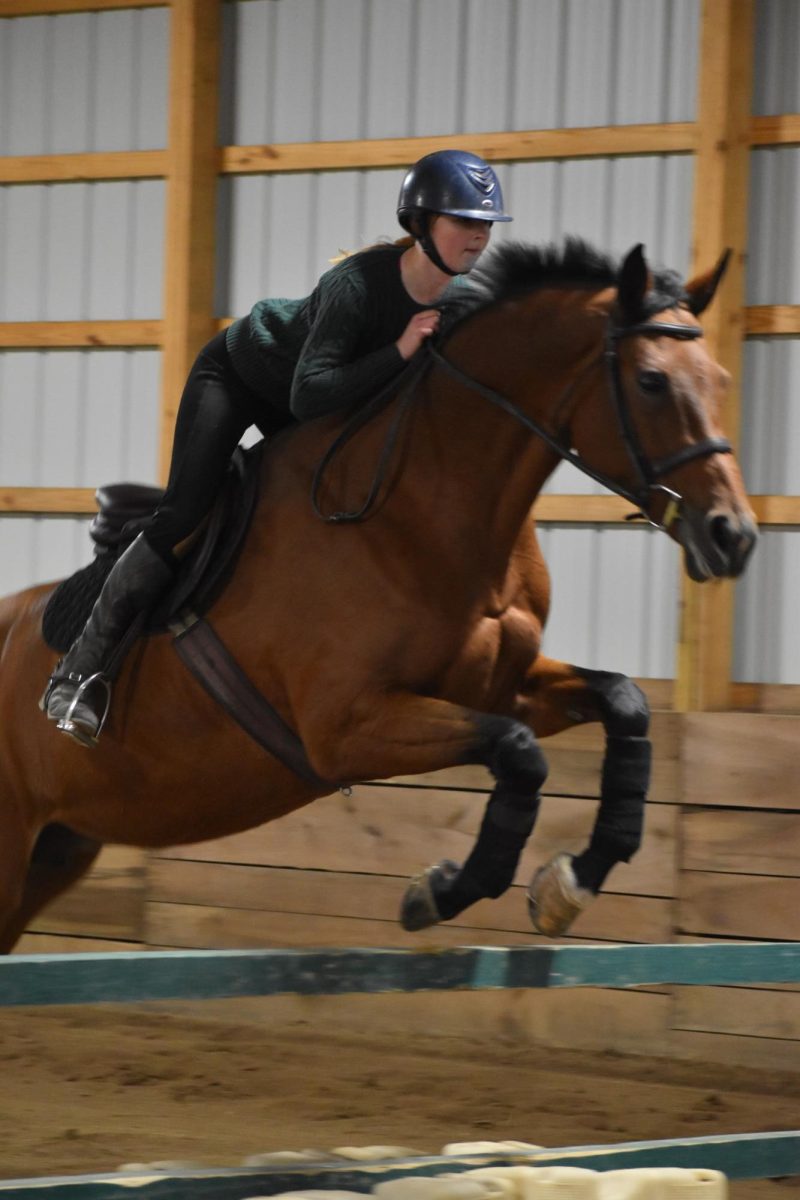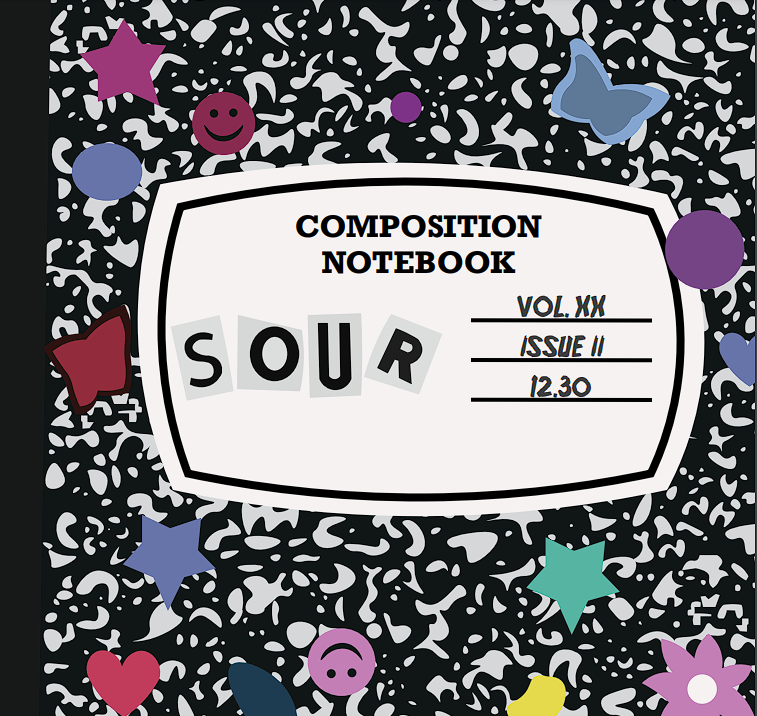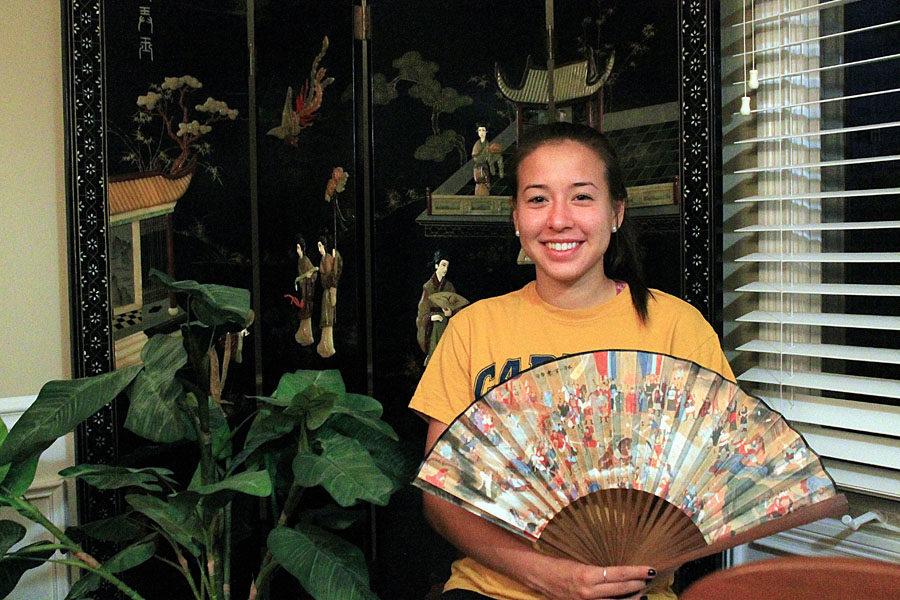Every year for Thanksgiving, senior Jessica Lecher experiences a fusion of her two cultural backgrounds as she enjoys both turkey and the traditional Chinese food that her grandmother makes. With a father of European descent and a Chinese mother, Lecher is just one of a few students with a culturally split background.
While many individuals associate their identity with their cultural backgrounds, this can prove to be a problem for students who cannot specifically connect to one culture. According to a study released by the Pew Research Center last year, the U.S. rate of interracial marriages hit a record high in 2012. It also stated that 8.4 percent of all marriages, in comparison to 3.2 percent in 1980, are between spouses of different races.

In marriages such as these, different cultures can sometimes be brought together.
Through the study of their own backgrounds, these diverse students are able to learn more about not just their own families, but can learn more about themselves as well. By recognizing and embracing the fact that they are unique, these students can gain distinct perspectives.
“I think it allows me to have a broader understanding of different cultures. I even lived in China for a few years, so that let me understand my culture more,” Lecher said. “I can fit in with a bunch of diverse groups of people because of my mixed ethnicity.”
Lecher’s family brings the two different aspects of her identity together to create hybrid holidays. However, at times, her family focuses on more than just one culture.
“Every year for Chinese (New Year), we traditionally get money in red envelopes from our grandparents and we hang Chinese banners around our house and all these traditions that go with Chinese New Year,” Lecher said.
During her fourth grade year, Lecher resided in China, which allowed her to gain a better understanding of not only her own background, but also of many different cultures, as she attended a school that featured ethnicities ranging from French to Japanese to German.
Senior Emi Tomozawa, who has a Japanese father and a German mother, said she agreed with Lecher. She said that her diverse background has altered her view of the people around her.
“I think it’s made me a more of an accepting person,” Tomozawa said. “Like, accepting of other people’s cultures and traditions.”
Many professionals agree with this perspective. With various books, courses and studies dedicated to the importance of cultural awareness, the term describes the idea of being open to altering one’s own cultural attitude in order to understand behaviors, values, histories and ideals of other cultures.
JoAnn Miller, a professor of sociology at Purdue, recognizes that children in families with varied backgrounds obtain appreciation for other cultures throughout their lives. According to Miller, these children are, therefore, more culturally aware.
“Children in families with differences experience more appreciation for different cultures,” Miller said. “They gain an understanding of how important differences are and yet how similar people are.”
Andrea Yocum, French teacher and French Club sponsor at CHS, said she agrees with this notion. Yocum lived in Senegal from 2005 to 2006 and has also been able to work with students involved in the IU Honors program.
“I think that when students learn about other cultures, it teaches them tolerance and understanding for new people and to respect the traditions and religions, food and customs of others,” Yocum said. “It gives students a wider perspective on life, a better ability to solve problems and the ability to communicate with many other people, not just people of their same ethnic or cultural background.”
Sophomore Anna Kozak, who has a mother of Spanish descent and a Slovakian father, admits that she was not always comfortable with her own background.
“When I was little, I’m not going to lie, I didn’t like being a part of two different cultures because I thought people were going to look and see me differently since I was different, but now that I’m older and more mature I think it’s really cool because not everyone can say what I can say and I like it,” Kozak said.
Regardless of how they have come to terms with their backgrounds, students said they do not find it easy to completely combine their mothers’ and fathers’ cultures. According to Tomozawa, the concept of identifying oneself culturally can be a struggle at times.
“On the SATs they always say, ‘check one race,’” she said. “What do (you) check if you’re white and Asian?”
Regarding her own plans fo r the future in terms of how her culture plays a role in her life, Tomozawa hopes to mix her two backgrounds together. Many other multicultural students try to do the same on a daily basis. Kozak describes her house as a combination of her two identities; it features Mexican blankets near German paintings. Lecher and Tomozawa are also starting a Cultural Awareness Club so that they can connect with other individuals like them.
r the future in terms of how her culture plays a role in her life, Tomozawa hopes to mix her two backgrounds together. Many other multicultural students try to do the same on a daily basis. Kozak describes her house as a combination of her two identities; it features Mexican blankets near German paintings. Lecher and Tomozawa are also starting a Cultural Awareness Club so that they can connect with other individuals like them.
“We wanted to start it so we could gather a network of mixed-race kids and connect,” Lecher said.
Lecher’s idea mimics the real world with its mix of different ethnicities, races and cultures.
“We live in a global society,” Miller said. “Those who are culturally aware can better participate in the global society.”
While at times these students’ cultural backgrounds may seem to clash, they also serve to provide opportunities of singularity and diversity.
“I’m always really proud of the fact that I’m half Asian and people are always really curious about my ethnicity,” Lecher said. “It’s something that’s unique to me.”
































![British royalty are American celebrities [opinion]](https://hilite.org/wp-content/uploads/2024/03/Screenshot-2024-03-24-1.44.57-PM.png)




















![Review: Quiet on Set: The Dark Side of Kids TV is the long awaited exposé of pedophilia within the children’s entertainment industry [MUSE]](https://hilite.org/wp-content/uploads/2024/04/unnamed.jpg)
![Review: “The Iron Claw” cannot get enough praise [MUSE]](https://hilite.org/wp-content/uploads/2024/04/unnamed.png)
![Review: “The Bear” sets an unbelievably high bar for future comedy shows [MUSE]](https://hilite.org/wp-content/uploads/2024/03/unnamed.png)
![Review: “Mysterious Lotus Casebook” is an amazing historical Chinese drama [MUSE]](https://hilite.org/wp-content/uploads/2024/03/0.webp)
![Thea Bendaly on her Instagram-run crochet shop [Biz Buzz]](https://hilite.org/wp-content/uploads/2024/03/IMG_0165-1200x838.jpg)
![Review in Print: Maripaz Villar brings a delightfully unique style to the world of WEBTOON [MUSE]](https://hilite.org/wp-content/uploads/2023/12/maripazcover-1200x960.jpg)
![Review: “The Sword of Kaigen” is a masterpiece [MUSE]](https://hilite.org/wp-content/uploads/2023/11/Screenshot-2023-11-26-201051.png)
![Review: Gateron Oil Kings, great linear switches, okay price [MUSE]](https://hilite.org/wp-content/uploads/2023/11/Screenshot-2023-11-26-200553.png)
![Review: “A Haunting in Venice” is a significant improvement from other Agatha Christie adaptations [MUSE]](https://hilite.org/wp-content/uploads/2023/11/e7ee2938a6d422669771bce6d8088521.jpg)
![Review: A Thanksgiving story from elementary school, still just as interesting [MUSE]](https://hilite.org/wp-content/uploads/2023/11/Screenshot-2023-11-26-195514-987x1200.png)
![Review: When I Fly Towards You, cute, uplifting youth drama [MUSE]](https://hilite.org/wp-content/uploads/2023/09/When-I-Fly-Towards-You-Chinese-drama.png)
![Postcards from Muse: Hawaii Travel Diary [MUSE]](https://hilite.org/wp-content/uploads/2023/09/My-project-1-1200x1200.jpg)
![Review: Ladybug & Cat Noir: The Movie, departure from original show [MUSE]](https://hilite.org/wp-content/uploads/2023/09/Ladybug__Cat_Noir_-_The_Movie_poster.jpg)
![Review in Print: Hidden Love is the cute, uplifting drama everyone needs [MUSE]](https://hilite.org/wp-content/uploads/2023/09/hiddenlovecover-e1693597208225-1030x1200.png)
![Review in Print: Heartstopper is the heartwarming queer romance we all need [MUSE]](https://hilite.org/wp-content/uploads/2023/08/museheartstoppercover-1200x654.png)























![Review: Ladybug & Cat Noir: The Movie, departure from original show [MUSE]](https://hilite.org/wp-content/uploads/2023/09/Ladybug__Cat_Noir_-_The_Movie_poster-221x300.jpg)

![Review: Next in Fashion season two survives changes, becomes a valuable pop culture artifact [MUSE]](https://hilite.org/wp-content/uploads/2023/03/Screen-Shot-2023-03-09-at-11.05.05-AM-300x214.png)
![Review: Is The Stormlight Archive worth it? [MUSE]](https://hilite.org/wp-content/uploads/2023/10/unnamed-1-184x300.png)





